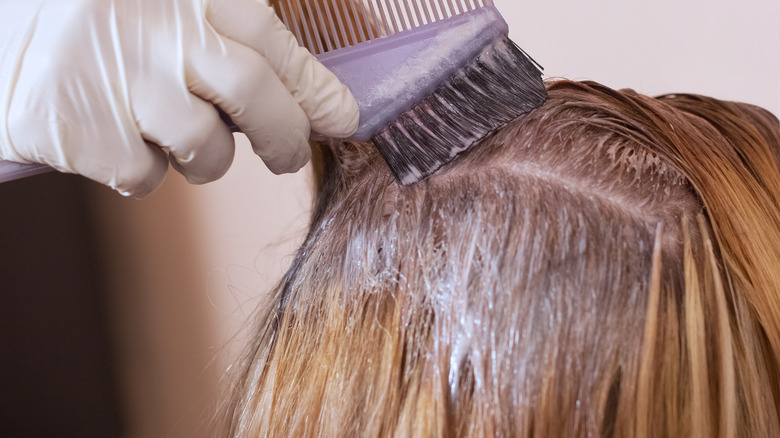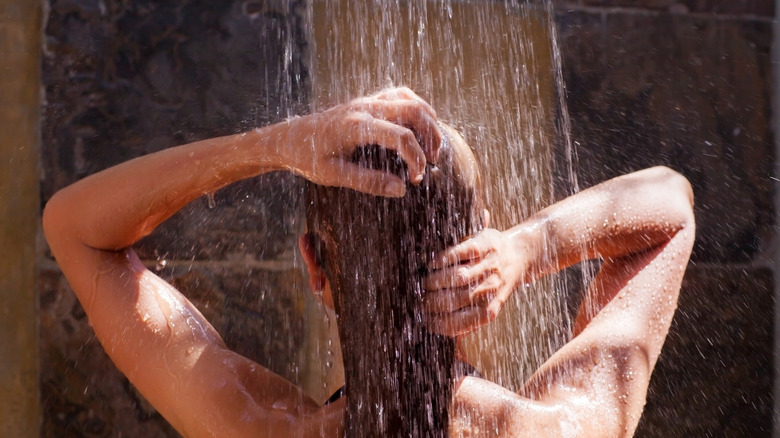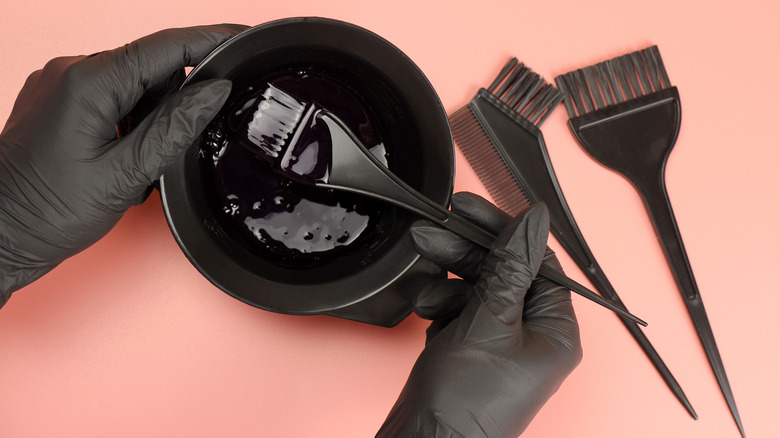What To Do If Your Scalp Burns After Bleaching Your Hair
When summer arrives, it can be especially tempting to seek out a lighter hair color. If you love to color your hair, you aren't alone. According to Statista, over 64 million people dyed their hair in the United States in 2019, and the global market for hair-dyeing products is expected to reach over $40 billion by 2023. Changing your hair color can be exciting and a source of creativity, but it also comes with risks and safety precautions that you should know in advance, especially if you are using an at-home hair bleach kit.
When bleaching products are applied to hair, a chemical reaction occurs within the hair's pigment, otherwise known as melanin. The result is the removal of color or lightening of hair (via Healthline). There are two primary ways to lighten your hair with a bleaching product: one way is to bleach your hair, and the other is to bleach your scalp by applying the bleach directly onto your scalp instead of only the hair. No matter the method you use, applying a bleaching product near your scalp has the potential to cause chemical burns that can be both painful and extremely dangerous. Mild burns can be treated at home, but medical care may be necessary if the burn is serious. Here's what you should know if your scalp burns after using a bleaching product.
Immediate steps to take
Healthline reports that hair bleaching products include harsh chemicals, such as hydrogen peroxide, which can lead to hair becoming brittle. Additionally, it may result in skin irritation or even chemical burns on your scalp that could become serious if not immediately treated. If you bleach your hair at home or in a salon and your scalp begins to burn, the first thing you should do is wash the product out as quickly as possible. You'll want to wear gloves when you wash your hair so the chemical irritant doesn't get onto other parts of your body. Flush your scalp for a minimum of 10 minutes with cool water. While rinsing, be careful not to rub, scratch, wipe, or otherwise press the chemicals further into your scalp.
Dermatologist Dr. Francesca Fusco tells Refinery29 that another way to soothe the area after rinsing is to combine ice and milk in a bowl and then apply it to your scalp. Let the mixture sit on your scalp for three minutes, and repeat this process up to three times. After your scalp and hair are sufficiently rinsed of the bleaching solution and chemicals, you can apply a cool compress to the irritated area to reduce swelling and inflammation (per Healthline). A cool compress can help ease pain, for which you can also take over-the-counter (OTC) pain relievers.
Safety tips for using hair bleach
Given the harsh chemicals in hair bleach solutions, you'll want to take proper safety precautions. The U.S. Food & Drug Administration (FDA) advises following the directions for product application, being mindful not to leave the solution on hair longer than advised, and thoroughly rinsing hair after application. You should wear gloves while mixing the solution, applying it to hair, and whilst rinsing hair afterward. Once the process is complete, clean any surfaces thoroughly before removing your gloves. The FDA also suggests performing a patch test before doing a full application so that you can be aware of how the product may affect your skin and scalp.
Healthline suggests using a timer to ensure that you don't accidentally leave the product on for longer than you should, which can increase the risk of irritation or chemical burn. Additionally, don't apply multiple rounds of bleaching solution. You should be kind to your scalp and skin — even if you're eager to have lighter hair, wait until your scalp heals before bleaching if it is already irritated, injured, sensitive, or sunburned. If your scalp burns after hair bleaching and you're concerned, always consult with a medical professional.



